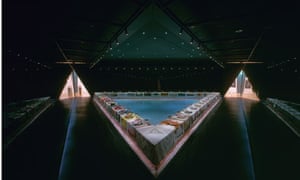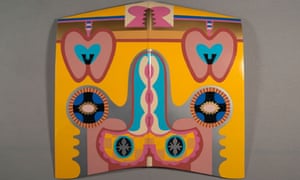"The New York art critic Jerry Saltz created a furore on Facebook when – after counting the work by women in the Museum of Modern Art's painting and sculpture galleries – he accused the museum of practising a "form of gender-based apartheid". When I was at work on The Dinner Party, only one half of one percent of art books dealt with women. More recently, it has risen to 2.7%. Given that it is major exhibitions, museum collections and art publications that will define the historical record, it is clear that at the top level of the art world it is pretty much business as usual when it comes to women." Judy Chicago
"When the Mob turns Angry"
Response Article LINK:Diacritical Journal,ARTS JOURNAL,https://www.artsjournal.com/diacritical/2009/06/when_the_mob_turns_angry_whats-2.html
We women artists refuse to be written out of history
The macho art world has ignored the contribution of women. But we have the power to change this
When I was a student at the University of California, Los Angeles, I took a class titled European intellectual history, taught by a well-known historian. He promised to talk about women's contributions at the end of the semester. As I was intent on making a mark on art history, I was eager to learn about what women before me had done. Finally, the last class arrived. My professor strode into the room and arrogantly announced: "Women's contributions; they made none." His assessment made me feel a freak; how dare I think that I could go where no woman before me had trod?
But I had such a burning desire to make art that when I got out of graduate school (where I had many skirmishes with my male professors because they hated my biomorphic imagery), I worked 60 hours a week in my studio. The LA art scene was extremely macho in the 60s and few women were taken seriously. For a decade I struggled to make a place for myself, but to accomplish this I had to adopt "male drag" – that is, make work that looked like that of my male peers and echoed their concerns. By the end of that time I was fed up and wanted to be myself as a woman. I decided to look into history to see if there had been any before me who had encountered similar obstacles.
This was before there were any women's studies classes, so I had to ferret out information entirely on my own. What I discovered changed my life. It also enraged me because my professor was completely wrong. Unfortunately, ignorant convictions like his continue to hold sway, exemplified by Caitlin Moran's recent book, How To Be a Woman. "Even the most ardent feminist historian … can't conceal that women have basically done fuck-all for the last 100,000 years," she writes. The truth is that for centuries women have struggled to be heard, writing books, making art and music and challenging the many restrictions on women's lives. But their achievements have been repeatedly written out of history.
I set out to chronicle this ongoing erasure in my installation The Dinner Party, a monumental, symbolic history of women in western civilisation. It created a major stir when it premiered in 1979. Originally slated to travel to a number of museums, the tour collapsed in the face of vitriolic reviews, sometimes (sadly) written by women. Then an amazing thing happened: people in the US, Canada, the UK, Germany and Australia began to organise, resulting in a worldwide tour that eventually brought The Dinner Party to 16 venues in six countries on three continents, and a viewing audience of more than a million. When I first created The Dinner Party, my goal was for it to be permanently housed as this would be the only way to overcome the repeated erasure of women's history that the work recounted. It took 30 years for my goal to be achieved, thanks to the vision of Dr Elizabeth A. Sackler who acquired, donated and, in 2007, housed The Dinner Party at the Elizabeth A Sackler Centre for Feminist Art at the Brooklyn Museum, where it draws people from all over the world.
I am often asked if things have changed since I was a young artist. Obviously there are many changes worth celebrating: for example, women and artists of colour are exhibiting widely and are free to be themselves in their work in ways that were completely impossible when I was young. At the same time, many young women artists do not wish to be associated with the feminist art movement of the 1970s that opened the doors of opportunity to them. This situation is the result of women's art, women's history and the feminist art movement still being marginalised in our educational institutions and museums. Most schools continue to run a male-centred curriculum, and a survey showed work by women artists makes up only 3% to 5% of major permanent collections in the US and Europe.
The New York art critic Jerry Saltz created a furore on Facebook when – after counting the work by women in the Museum of Modern Art's painting and sculpture galleries – he accused the museum of practising a "form of gender-based apartheid". When I was at work on The Dinner Party, only one half of one percent of art books dealt with women. More recently, it has risen to 2.7%. Given that it is major exhibitions, museum collections and art publications that will define the historical record, it is clear that at the top level of the art world it is pretty much business as usual when it comes to women.
However, The Dinner Party demonstrated the power of art in that it overcame enormous resistance and is now part of art history, inspiring generations of young people with the stories of 1,038 courageous women. And my David and Goliath story is not the only one; think of Pussy Riot and the havoc wrought by three young women and a feminist song. The moral of this story is that even if there's a long way to go, art can still strike a blow for freedom – for everyone. Click here for source article:Judy Chicago, the Guardian, Tue 9 Oct 2012 15.15 EDT

